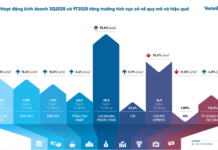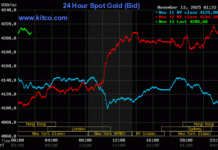Global Gold Prices Poised to Surpass $3,800/Ounce
Last week, global gold prices experienced significant volatility, repeatedly reaching new highs. For the first time, prices surpassed $3,700/ounce, peaking at $3,790—an all-time record. By week’s end, gold closed at $3,775.69/ounce, marking a nearly 2.5% increase from the previous week.
A Wall Street expert survey revealed unprecedented optimism as gold prices continued to rise despite challenges. Retail investors also showed slightly more confidence in the metal’s short-term prospects.
Among 19 Wall Street professionals polled, 16 (84%) predicted further price increases next week, with none forecasting a decline. The remaining three (16%) anticipated stable prices.
A parallel online poll of 265 individual investors reflected growing optimism, though less pronounced than among professionals: 166 (63%) expected prices to rise, 56 (21%) predicted a drop, and 43 (16%) foresaw stability.
Fawad Razaqzada, market analyst at City Index and FOREX.com, expressed confidence that gold would soon exceed $3,800/ounce. He noted that only a significant shift in interest rate expectations could substantially impact gold’s upward trajectory.
“Gold is supported by robust and sustained central bank purchases, driven by concerns over U.S. public debt and persistent inflation. These factors, coupled with speculative activity, are likely to keep prices elevated,” Razaqzada explained.
“However, if upcoming data reduces expectations of a December rate cut, a stronger U.S. dollar could curb gold’s rise. Conversely, data reinforcing rate cut prospects would benefit gold. Barring major fundamental changes, I believe current dynamics will propel gold past $3,800.”

Domestic gold prices struggle to break through. (Photo: Minh Đức)
Aaron Hill, Chief Market Analyst at FP Markets (Australia), echoed this sentiment, suggesting the Fed has room to cut rates by at least 50 basis points before year-end.
Gold is poised to surpass $3,800, fueled by central bank purchases (projected at over 900 tons in 2025) and ETF inflows. UBS and ANZ have set year-end targets near this level amid geopolitical tensions, anticipating a rapid surge rather than prolonged accumulation as buyers return.
Barbara Lambrecht, Commodity Analyst at Commerzbank, agreed that while long-term trends favor gold, new catalysts are needed for prices to breach $3,800/ounce. She cautioned against short-term over-optimism.
“A third consecutive disappointing U.S. jobs report indicating a clear downturn could trigger a rally, as markets would price in faster Fed rate cuts. However, our economists forecast slight labor market improvement,” Lambrecht noted.
Domestic Gold Prices Face Resistance
Despite global gold prices hitting record highs last week, domestic prices remained between 134–135 million VND/tael, failing to surpass the 135.8 million VND/tael peak reached on September 8.
Dr. Nguyễn Trí Hiếu attributed domestic gold prices to global trends and Decree 232 on gold trading management, effective from October 10.
The decree eliminates the monopoly on gold bar production and raw gold imports, allowing licensed businesses and banks to participate in these activities.
Hiếu noted the difficulty in predicting near-term gold price movements. Prices could decline once the decree takes effect, impacting domestic supply and demand.
Decree 232 is expected to influence domestic gold supply-demand dynamics. With businesses and banks permitted to import and produce gold, increased supply could reduce demand pressure, cooling domestic prices.
“Predicting whether prices will rise or fall is challenging. A downward trend is possible but remains relative, dependent on global monetary policies,” Hiếu analyzed.
Nguyễn Quang Huy, CEO of the Finance and Banking Department at Nguyễn Trãi University, predicted that domestic gold prices would not drop immediately. Trust in SJC gold bars remains strong, and new brands will need time to establish quality and liquidity.
“Safe-haven demand amid global volatility and limited domestic supply will keep prices high in the short term. Over the medium to long term, increased supply from banks and businesses will narrow the gap between domestic and global prices, reducing the ‘domestic premium.’ This process may take 12–24 months or longer to stabilize,” Huy observed.
Huy also highlighted the end of SJC’s production monopoly as a significant shift, fostering competition.
“With more banks and businesses entering the market, gold bar supply will improve, creating a more transparent and internationally aligned market,” Huy concluded. However, he emphasized that these changes would take time due to licensing, production, and trust-building processes.
Vietnam’s Foundation for High-Income Aspirations by 2045: A Strategic Outlook
The past 80 years of Vietnam’s development is a testament to its vision, perseverance, and reform. The nation’s achievements during this period have laid a strong foundation, paving the way for its ambitious goals of high income, green growth, and inclusivity by 2045.










































